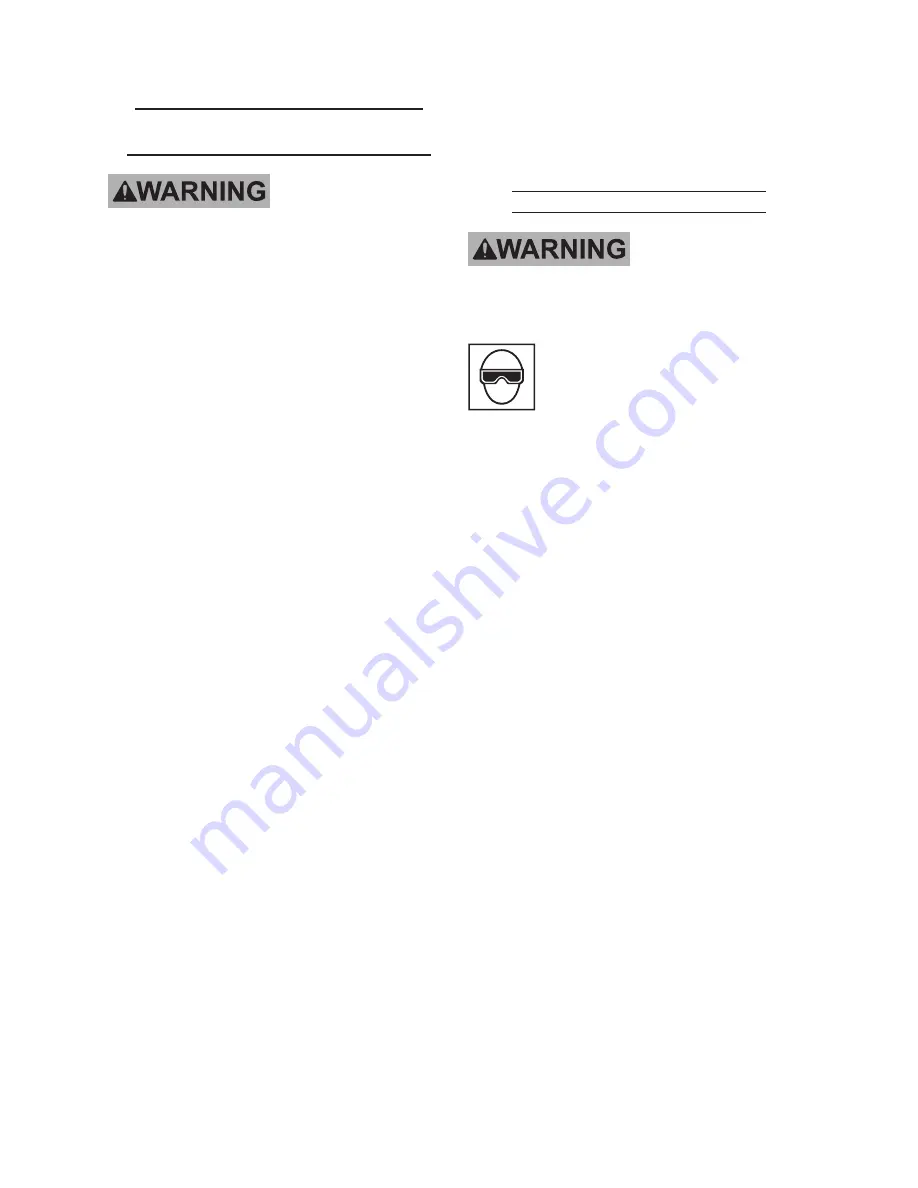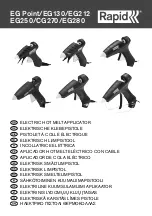
SKU 66995
For technical questions, please call 1-800-444-3353.
Page 10
Single Sequential Safety Trip
Mechanism Testing Procedure
TO PREVENT
SERIOUS INJURY
FROM ACCIDENTAL
OPERATION:
Empty the tool before this
procedure. Point the tool at a
piece of scrap wood when
testing.
1. Disconnect tool from the air supply.
2. Empty the magazine of fasteners.
3. Check that Trigger and Safety Nose-
piece move freely, without sticking.
4. Connect the air supply to the tool and
set within the Operating Air Pressure
indicated on the Specification chart.
5. Test tool by pressing Safety Nose-
piece against the workpiece without
pulling Trigger.
The tool must not
cycle (fire).
If it cycles (fires), stop
immediately and take the tool to a
qualified service technician for repair.
6. Hold the tool away, or off of the work-
piece. The Safety Nosepiece should
return to its original position. Squeeze
the Trigger.
The tool must not cycle
(fire).
If it cycles (fires), stop imme-
diately and take the tool to a qualified
service technician.
7. Press the Safety Nosepiece against
the workpiece and squeeze the
Trigger.
The tool must cycle (fire)
only once.
Release the trigger and
squeeze it again.
The tool must cy-
cle (fire) again only once.
With the
Trigger held, carefully lift the tool and
press it against the workpiece again.
The tool must not cycle (fire).
If it
fails to act in the manner explained in
bold, have it repaired by a qualified
service technician.
Loading/Unloading Nailer
TO PREVENT
SERIOUS INJURY
FROM ACCIDENTAL
OPERATION, BEFORE
LOADING:
• Wear ANSI-approved safety
goggles with side shields.
Other people in the work area
must also wear ANSI-approved
impact safety goggles with side
shields.
• Release the trigger.
• Detach the air supply.
• Attempt to fire the Tool into
a piece of scrap wood to
ensure that it is disconnected
and is incapable of firing any
fasteners.
1. To load nails, hold Nailer with Safety
(45) pointing downward and push up
to release Latch (57) on Magazine
(50).
2. Pull back on Magazine slide out Side
Cover (56).
3. Insert stick of 3/8” - 2” Brad Nails into
front part of Magazine.
4.
Please note:
Make sure pointed
ends of fasteners are resting on bot-
tom ledge when loading.
5. Slide the Side Cover forward and into
Magazine until Latch catches.
6. To unload nails, follow the above
instructions, making sure to
first
disconnect the air supply
before
unloading nails.


































